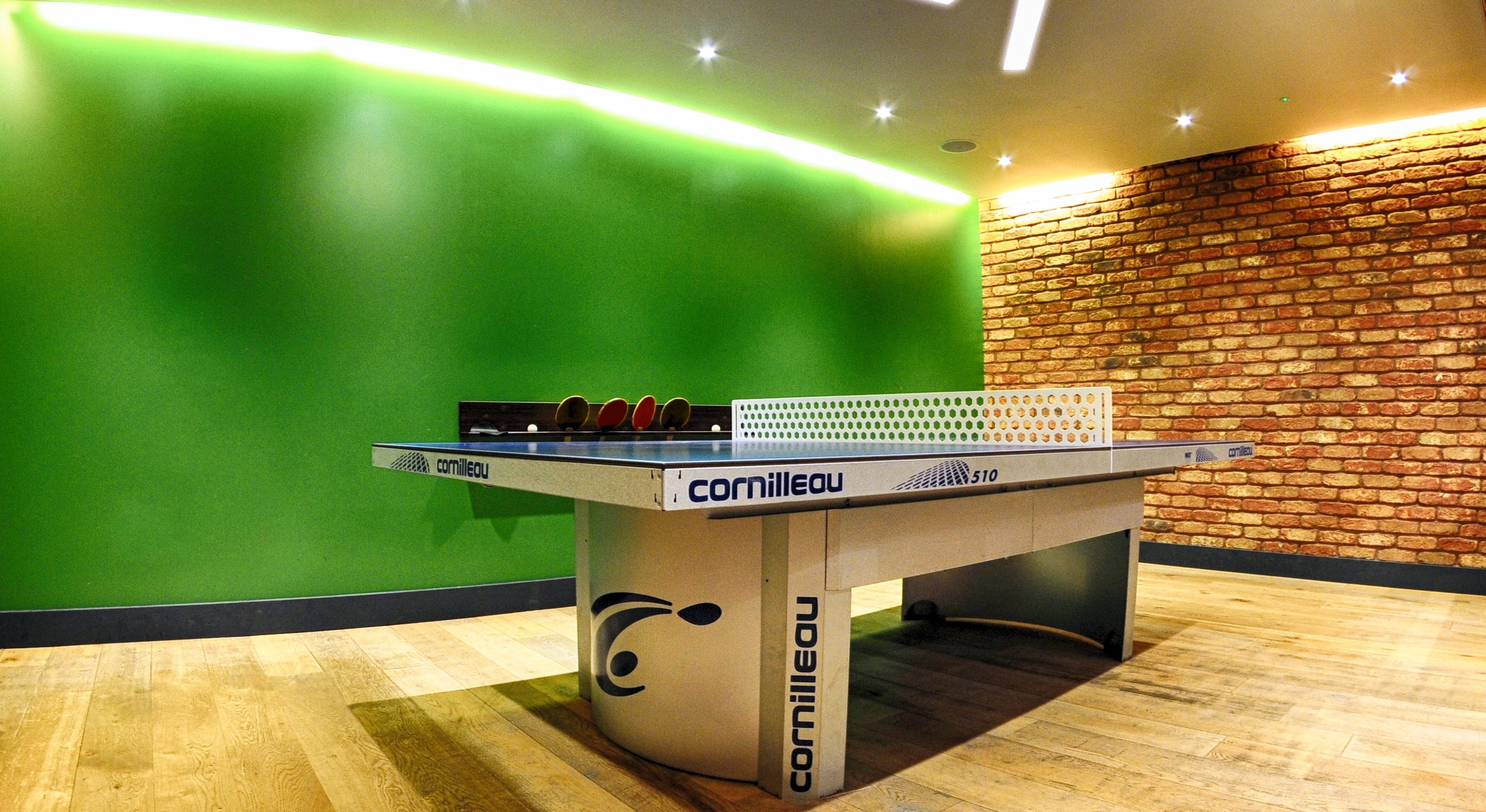When I talk to people about workplaces that maximize creativity, they often imagine ping-pong tables and brightly painted walls.
I enjoy an entertaining game of ping-pong as much as anyone. I even have a ping-pong table at my home. I have nothing against brightly painted walls either. But have you ever wondered why we default to these as solutions for creative workplaces? I think Gordon MacKenzie sheds some light on this.
In the 1980s, Gordon MacKenzie was a ruckus-maker in the corporate giant of Hallmark Greeting Cards. With the self-given title Creative Paradox, he helped employees creatively navigate a culture he called the “big grey place.” In his book Orbiting the Giant Hairball, he tells a story about visiting area grade schools to speak with students.
He would ask each grade to raise their hands, “Any artists here?”
In kindergarten, everybody was an artist. Not just an artist, but a two-hands artist: “Me! Me! Me! I’m an artist!”
The first graders were still 100 percent artists, but only with one hand. Then it went downhill. When MacKenzie talked to the sixth-graders, he would get one or two kids raising their hands, nervously looking around as if they were outing themselves.
What does this have to do with creativity in the workplace?
If the environment of an elementary school can convince young students they are no longer artists, what are today’s workplaces telling us about our creative potential? In a time increasingly demanding new ideas in order to remain competitive, about two-thirds of workers believe their workplace is crushing their creativity and innovation.
We need environments that foster people’s ability to produce innovative ideas and creative solutions, but this isn’t solved by simpIy buying a few ping-pong tables or painting the office in brilliant colors.
These are choices leaders make because they don’t have clear solutions for creating environments shaped for creativity. And perhaps we choose them because the bright colors and games remind us of when we considered ourselves creative artists… early grade school.
But, if our creativity holds significant business value, then it cannot be relegated to our childhood. It must be able to exist and thrive as we mature.
What does “mature creativity” look like?
A recent Gallup study shows three (rare) factors needed to foster creativity in the workplace. I’ve shared them below, along with my own ideas on what these factors could look like in practice:
- Expectations to be creative at work
“… managers should make it clear that observing, thinking, making connections — basic creativity — is part of every employee’s job role and will be a factor in their performance development.” – Gallup study
What does this look like?
Do one-on-ones and performance reviews focus only on results, or are individuals expected to share examples of their creative efforts? Are leaders asking for, acknowledging and rewarding innovative ideas? - Time to be creative
“Whatever the psychological process, scheduling time for creativity ensures that it happens, shows that creativity is a cultural value to the organization and gives managers something tangible to measure.” – Gallup study
What does this look like?
This isn’t necessarily about creating a standard, like Google’s now defunct 20% rule, which encouraged employees to spend 20% of their time on side projects but some critics said was more like a 120% rule. Instead, encourage employees to build in time at the beginning of projects to explore alternative ideas. Spend time at the beginning of meetings eliciting ideas from participants. Hold creative sessions facilitated (internally or with by a consultant) to generate ideas or spark creative thinking. - Freedom to take the risks necessary to be creative
“If workers believe new ideas are unwelcome, or that well-intentioned failures will be punished, they’ll shut down. They’ll be less creative, of course, but they may also be less willing to help coworkers, offer advice or flag unsafe practices. Today, only one in five U.S. workers strongly agree that their opinions count at work — no wonder only half of workers who are expected to be creative say they’re allowed to take risks.” – Gallup study
What does this look like?
Creative freedom flourishes when there is a culture of trust and experimentation is encouraged. If people don’t trust their coworkers or leaders, they will not be vulnerable enough to share ideas or attempt novel solutions. Going through Patrick Lencioni’s book The 5 Dysfunctions of a Team is one way to help develop trust, honesty and accountability. To encourage experimentation, promote rapid prototyping of ideas. You can’t guarantee experiments will succeed, so give employees freedom to make “small bets” on ideas. Finally, realize you need to be OK if they fail. One surefire way to lose the valuable trust of employees is to ask for creativity, and then punish those who take creative risks.
These points from the Gallup study focus on a cultural environment for creativity. This is a huge lever leaders can use to encourage innovation and creativity, but our physical space and technology tools can positively or negatively influence creativity as well. Whether you tackle the issue culturally, physically or technologically, the bottom line is giving people an environment where they can be innovative and do their job creatively.
Remember Gordon MacKenzie and the sixth graders who didn’t think they were artists? MacKenzie would ask if all the artists had transferred to art school. After the kids laughed, he would tell them.
“Uh-uh. I don’t think that’s it. I’m afraid there’s something much more sinister than that at work here. I think what’s happening is that you are being tricked out of one of the greatest gifts every one of us receives at birth. That is the gift of being an artist, a creative genius.”
If we create workplaces that return that birthright, our world would be a better place for it.

